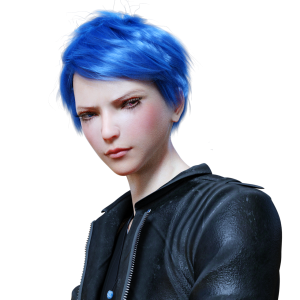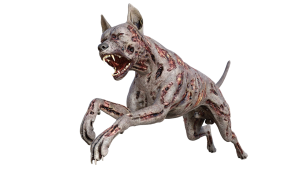Create Cartoon Animation Easily
Create Cartoon Animation: Did you know that cartoon animation has been captivating audiences for over a century? From the iconic characters of Walt Disney to the modern masterpieces of Pixar, cartoons have become an integral part of our visual culture, entertaining and inspiring millions of people worldwide. If you’ve ever wondered how these animated wonders are created, you’ve come to the right place. In this comprehensive step-by-step guide, we will take you through the process of creating cartoon animation, providing you with all the tools and knowledge you need to bring your own animated characters to life.
Key Takeaways:
- Cartoon animation has a rich history and continues to captivate audiences worldwide. Create Cartoon Animation
- This step-by-step guide will provide you with the tools and knowledge to create your own cartoon animation.
- Learn about concept development, storyboard creation, software selection, animation techniques, special effects, and more.
- Discover the role of sound and music integration in creating an immersive audiovisual experience.
- Bring together all the elements to create a polished and professional cartoon animation.
Understanding Cartoon Animation
Create Cartoon Animation: Before diving into the process of creating cartoon animation, it is important to have a basic understanding of the art form. In this section, we will explore the fundamentals of cartoon animation, including the principles of movement and the key elements that go into creating captivating characters.
Principles of Movement in Cartoon Animation
Movement is at the heart of cartoon animation, bringing characters and scenes to life. Understanding the principles of movement is essential for creating animations that are visually appealing and believable. Here are some key principles:
- Squash and Stretch: This principle adds flexibility and realism to characters by exaggerating the stretching and compression of their shapes during movement.
- Timing and Spacing: Controlling the timing and spacing of movements contributes to the illusion of weight, speed, and fluidity in animations.
- Anticipation and Follow-through: Anticipation prepares the audience for an action, while follow-through adds natural motion to the end of a movement.
- Arcs: Most natural movements follow curved paths, so incorporating arcs into animations helps create a more organic and graceful motion.
- Secondary Animation: Adding secondary animations, such as floppy ears or waving hair, can enhance the realism and appeal of cartoon characters.
Creating Captivating Characters in Cartoon Animation
Characters are the heart and soul of any cartoon animation. Through their design, personalities, and movements, they engage the audience and drive the story. Here are some key elements to consider when creating captivating characters:
- Distinctive Design: Unique and memorable character designs are essential for making an impact and capturing the audience’s attention.
- Personality Traits: Each character should have distinct personality traits that inform their actions and interactions within the animation.
- Facial Expressions: Expressive facial features allow characters to convey emotions and connect with the audience on a deeper level.
- Gestures and Body Language: Non-verbal cues, such as gestures and body language, can communicate a character’s thoughts and intentions effectively.
- Consistent Movement Style: Characters should move in a way that aligns with their design and personality traits, ensuring a cohesive and believable animation.
Concept Development and Storyboarding
Concept development and storyboarding are vital steps in the animation process. In this section, we will explore how to generate creative ideas, refine them into solid concepts, and create a storyboard that serves as a blueprint for your animation.
Concept development involves brainstorming and refining your ideas to create a clear vision for your animation. Start by identifying the key elements of your story, such as the main characters, their goals, and the overall theme. Consider the emotions you want to evoke and the message you want to convey.
Once you have a solid concept in mind, it’s time to create a storyboard. A storyboard is a sequence of visual panels that represent key scenes and actions in your animation. It helps you visualize the flow of your story, plan camera angles, and determine the timing of each scene.
To create a storyboard, start by sketching out each panel with simple drawings. Focus on capturing the essential elements of each scene, including character poses, facial expressions, and important actions. Use arrows to indicate movement and captions to describe the action or dialogue taking place.
Take a look at the example below:
| Panel | Description |
|---|---|
| 1 | A close-up of the main character’s worried expression. |
| 2 | The main character sets off on a journey, carrying a backpack. |
| 3 | The main character meets a friendly sidekick. |
| 4 | Together, they face a series of challenges. |
| 5 | The main character overcomes the final challenge and achieves their goal. |
| 6 | The main character and sidekick celebrate their success. |
By creating a detailed storyboard, you can effectively plan and visualize your animation before diving into the production phase. It serves as a valuable reference for animators, allowing them to bring your vision to life with accurate timing, movements, and expressions.
Choosing the Right Animation Software
When it comes to creating cartoon animation, having the right animation software is essential. With a wide range of options available, it’s important to select the software that best suits your needs. In this section, we will explore different animation software options and provide tips on how to choose the best one based on your specific requirements and budget.
Factors to Consider When Choosing Animation Software
When deciding which animation software to use, there are several factors to consider:
- Level of Expertise: Are you a beginner or an experienced animator?
- Features: What specific features do you require? Consider aspects such as drawing, rigging, and effects.
- Compatibility: Does the software work well with other tools or programs you use?
- Learning Curve: How user-friendly is the software? Consider the ease of navigation and availability of tutorials.
- Cost: What is your budget for animation software?
By taking these factors into account, you can narrow down your options and select the software that best aligns with your needs and goals.

Popular Animation Software Options
Here are some popular animation software options used by professionals:
| Software | Description | Key Features |
|---|---|---|
| Toon Boom Harmony | A professional-grade software used in the animation industry. |
|
| Adobe Animate | A versatile software suitable for both 2D and 3D animation. |
|
| Blender | A free and open-source software for 3D animation. |
|
These are just a few examples of animation software available in the market. It’s important to explore different options and consider your specific requirements before making a decision.
Remember, choosing the right animation software can greatly impact your workflow and the quality of your animations. Take the time to research, try out demos, and gather feedback from other animators to ensure you make an informed choice.
Creating Characters and Environments
When it comes to cartoon animation, characters and environments are the foundation of a captivating story. In this section, we will explore the process of creating compelling characters, designing engaging environments, and developing a consistent visual style that brings your animation to life.
The Importance of Characters: Create Cartoon Animation
Characters are the heart and soul of your animation. They are the ones who will take your audience on an emotional journey, evoking laughter, joy, or even tears. To create memorable characters, you need to focus on their personality, appearance, and unique traits.
Start by brainstorming ideas for your characters. Consider their background, motivations, and desires. This will help you shape their personality and create a character that resonates with your audience. Once you have a clear vision for your character, it’s time to bring them to life.
Designing the visual appearance of your character is just as important as their personality. Pay attention to details such as their facial features, body proportions, and clothing style. These visual elements will contribute to their overall appeal and make them more relatable to your audience.
Developing Engaging Environments
In addition to characters, environments are crucial in setting the tone and atmosphere of your animation. Whether it’s a bustling city, a mystical forest, or an otherworldly planet, the environment should complement your characters and enhance the storytelling.
Start by sketching out the key elements of your environment. Consider the lighting, colors, and textures that will best convey the desired mood. Take inspiration from the world around you and incorporate unique elements that make your environment visually interesting.
Remember that consistency is key when it comes to creating environments. Ensure that the visual style of your environment aligns with your characters and the overall theme of your animation.
Creating Characters and Environments
| Step | Creating Characters | Developing Environments |
|---|---|---|
| 1 | Brainstorm ideas for character personality, appearance, and traits | Sketch out key elements of the environment |
| 2 | Design visual appearance of the character, including facial features and clothing style | Consider lighting, colors, and textures to convey the desired mood |
| 3 | Ensure consistency in the visual style of the character | Incorporate unique elements that make the environment visually interesting |
By investing time and effort into creating well-rounded characters and visually stunning environments, you will be able to captivate your audience and bring your animation to life.
Animation Techniques and Principles
Animation techniques and principles are fundamental to bringing your characters to life. By understanding these techniques and principles, you can create animations that are fluid, realistic, and captivating. In this section, we will explore a variety of animation techniques, such as keyframing and motion capture, and discuss the principles that govern movement and timing in animation.
Keyframing: Create Cartoon Animation
Keyframing is a widely used animation technique that allows you to define specific poses or keyframes at different points in time. The computer then generates the in-between frames to create smooth movement. Keyframing gives you precise control over your character’s actions and allows you to create complex animations. Here is an example of a keyframed animation:
| Frame | Character Pose |
|---|---|
| Frame 1 | Standing |
| Frame 20 | Running |
| Frame 40 | Jumping |
| Frame 60 | Landing |
Motion Capture: Create Cartoon Animation
Motion capture is another powerful animation technique that involves recording the movements of real-life actors or objects and applying them to virtual characters. This technique allows for highly realistic and nuanced animations. Here is an example showcasing the before and after of motion capture:
| Before Motion Capture | After Motion Capture |
|---|---|
Principles of Movement and Timing: Create Cartoon Animation
In animation, movement and timing are crucial for creating convincing and engaging animations. Understanding the principles that govern movement can help you bring your characters to life. Some key principles to consider include:
- Squash and stretch: This principle adds volume and weight to your characters and objects, making their movements more dynamic.
- Anticipation: By adding anticipation before a major action, you can make it more impactful and realistic.
- Timing: The timing of movements greatly influences how animations are perceived. Adjusting timing can create different moods and emotions.
- Follow-through and overlapping action: These principles add a sense of realism and weight to your animations by allowing some parts of the character to lag behind others.
By applying these animation techniques and principles, you can create animations that captivate your audience and bring your characters to life. Experiment with different techniques and explore the principles of movement to elevate the quality of your animations.
Special Effects and Computer Graphics
Special effects and computer graphics are powerful tools that can elevate your cartoon animation to new heights. By incorporating these techniques, you can add an extra dimension of realism and visual appeal to your animations. In this section, we will explore some of the key techniques and strategies for integrating special effects and computer graphics into your animation.
Incorporating Special Effects: Create Cartoon Animation
Special effects can enhance the impact of your cartoon animation by creating stunning visual elements. Whether you want to simulate explosions, create magical transformations, or add dynamic lighting effects, special effects can help bring your animation to life. You can achieve these effects through various methods such as particle systems, fluid simulations, or simulated physics.
- Create realistic explosions using particle systems.
- Add magical transformations with fluid simulations.
- Enhance lighting effects to create dynamic atmospheres.
Utilizing Computer Graphics: Create Cartoon Animation
Computer graphics, or CGI, can greatly enhance the visual appeal of your cartoon animation. By integrating computer-generated elements seamlessly into your animation, you can create realistic environments, lifelike characters, and breathtaking landscapes. CGI allows you to push the boundaries of imagination and create visuals that were previously impossible to achieve.
- Create lifelike environments with detailed textures and lighting.
- Design and animate complex characters with intricate details.
- Build expansive and immersive landscapes using CGI techniques.
Creating Realistic Simulations: Create Cartoon Animation
One of the key advantages of special effects and computer graphics is the ability to create realistic simulations. Whether you want to simulate realistic physics, simulate natural phenomena, or create accurate motion dynamics, these techniques can help you achieve the desired level of realism in your animation.
- Create realistic physics simulations for lifelike movements.
- Simulate natural phenomena like water, fire, and weather.
- Generate accurate motion dynamics for characters and objects.
By incorporating special effects and computer graphics into your cartoon animation, you can create visuals that captivate and engage your audience. These techniques allow you to push the boundaries of creativity and produce animations that leave a lasting impression. So, let’s dive deeper into the world of special effects and computer graphics to take your animation to the next level.
Virtual Reality and 3D Animation
Virtual reality (VR) and 3D animation have significantly transformed the landscape of cartoon animation. These technologies have revolutionized the way creators bring their visions to life, offering immersive experiences and visually stunning animations.
In recent years, the advancements in virtual reality have allowed animators to step into a whole new world of storytelling. By creating digital environments that viewers can explore in real-time, VR adds a new dimension of engagement and interactivity. Whether it’s experiencing the thrill of a roller coaster ride or exploring a fantastical world, virtual reality has the power to transport audiences into the heart of the story.
Additionally, 3D animation has opened up endless possibilities for animators. With its ability to create lifelike characters, dynamic movements, and intricate details, 3D animation adds a level of realism that captivates audiences. By utilizing cutting-edge technology and sophisticated software, animators can create characters and environments that feel truly alive.
Moreover, the combination of virtual reality and 3D animation allows for the creation of immersive experiences that blur the line between the physical and virtual worlds. With the use of VR headsets and interactive motion controllers, viewers can interact with characters and environments in ways that were once unimaginable.
Whether it’s exploring a virtual theme park, embarking on an epic adventure, or stepping into a digital world of imagination, virtual reality and 3D animation have transformed the way we experience and engage with cartoon animation. These technologies continue to push the boundaries of creativity and storytelling, offering a new era of possibilities for animators and audiences alike.
Sound and Music Integration: Create Cartoon Animation
The seamless integration of sound and music plays a vital role in enhancing the overall impact of your cartoon animation. Whether it’s the sound effects that bring life to your characters’ movements or the music that sets the mood and engages the audience emotionally, the audio component is a powerful tool. In this section, we will explore various aspects of sound design, voice acting, and music integration, providing you with valuable insights and tips to elevate the audiovisual experience of your animation.
Role of Sound Design: Create Cartoon Animation
Sound design encompasses the creation and manipulation of sounds to enhance the storytelling process in your cartoon animation. It involves carefully selecting and editing sound effects, such as footsteps, explosions, or environmental sounds, to make the on-screen action more immersive and realistic. By paying attention to the details, you can create a rich and dynamic soundscape that adds depth to your animation.
Voice Acting for Character Development
Creating compelling characters often requires giving them a unique voice. Voice acting brings your animated characters to life, allowing them to express emotions, deliver dialogue, and engage with the audience. When casting voice actors, consider finding individuals who can capture the essence of your characters and deliver nuanced performances that resonate with the intended audience.
Bringing Music into Animation: Create Cartoon Animation
Music has the power to evoke emotions, set the tone, and heighten the impact of key moments in your cartoon animation. Whether it’s an energetic soundtrack during an action sequence or a melancholic melody during a poignant scene, the right music can greatly enhance the viewer’s overall experience. Collaboration with a composer or selecting the appropriate royalty-free music can help you find the perfect musical accompaniment for your animation.
| Benefits of Sound and Music Integration | Examples |
|---|---|
| Improved storytelling | Introducing specific sound effects to enhance character actions |
| Emotional impact | Choosing music that evokes a sense of joy, sadness, or suspense |
| Increased viewer engagement | Create an immersive audiovisual experience that captivates the audience |
| Enhanced atmosphere | Utilize soundscapes to establish the setting and build ambiance |
By considering the role of sound design, voice acting, and music integration, you can create a harmonious blend of audio and visual elements that elevates the quality of your cartoon animation. Now, let’s move on to the next section where we will explore various animation techniques and principles to further enhance your creations.
Bringing It All Together: Create Cartoon Animation
In this section, we will guide you through the process of creating a polished and professional cartoon animation. From refining your animation to adding finishing touches, we will cover all the steps necessary to bring your vision to life.
Refining the Animation: Create Cartoon Animation
Once you have created your characters and environments, it’s time to refine the animation itself. This includes adjusting the timing and movement of your characters to ensure smooth and natural animations. Through careful attention to detail, you can bring your characters to life and create captivating movement that engages your audience.
Adding Finishing Touches: Create Cartoon Animation
To enhance the visual appeal of your cartoon animation, it’s important to add the finishing touches. This may include adding special effects, adjusting lighting and shading, and fine-tuning the colors and textures of your characters and environments. By paying attention to these details, you can create a visually stunning animation that captivates viewers.
Exporting and Sharing your Final Product
Once your cartoon animation is complete, you’ll want to export it in the appropriate format for sharing with others. Depending on your needs, this may include exporting the animation as a video file, GIF, or HTML5 file for web integration. Additionally, you can share your animation on social media platforms, video-sharing websites, or even submit it to animation festivals and contests for recognition.
Essential Steps in Creating a Polished Cartoon Animation
| Step | Description |
|---|---|
| 1 | Refine the animation by adjusting timing and movement |
| 2 | Add finishing touches such as special effects and lighting |
| 3 | Export the animation in the appropriate format |
| 4 | Share the final product with your audience |
By following these steps and taking the time to refine your animation, you can create a cartoon animation that showcases your artistic abilities and captivates viewers. Whether you’re creating animations for entertainment, educational purposes, or marketing campaigns, these techniques will help you bring your ideas to life.

Conclusion
In conclusion, creating cartoon animation requires a unique blend of creativity, technical skills, and attention to detail. By following the step-by-step guide provided in this article, you will have all the tools and knowledge necessary to bring your animated characters to life. Whether you are a budding animator or an experienced professional, mastering the art of cartoon animation is a rewarding endeavor that allows you to unleash your artistic potential.
Throughout the process, you have learned about the fundamentals of cartoon animation, including the principles of movement and the key elements that make characters captivating. You have also explored the crucial stages of concept development and storyboarding, as well as selecting the right animation software that suits your specific needs.
Addition To Conclusion
In addition, you have gained insights into creating compelling characters and environments, mastering animation techniques and principles, incorporating special effects and computer graphics, and exploring the potential of virtual reality and 3D animation. Furthermore, you have discovered the importance of sound and music integration, and the significance of bringing all the elements together for a polished final product.
Armed with this knowledge, it’s time to embark on your journey into the world of cartoon animation. Whether you dream of creating captivating animated films, entertaining cartoons, or engaging advertisements, this guide has equipped you with the necessary skills and guidance to create moving pictures and CGI that captivate your audience. So, what are you waiting for? Start creating your own captivating cartoon animations today and unlock your artistic potential!
FAQ
What is cartoon animation?
Cartoon animation is the process of creating moving images using a series of hand-drawn or computer-generated drawings. It involves bringing characters, objects, and environments to life through the use of movement and storytelling.
What are the key elements of cartoon animation?
The key elements of cartoon animation include character design, storyboarding, movement, timing, and sound. These elements work together to create a cohesive and engaging animated story.
What software is commonly used for creating cartoon animation?
There are several software options available for creating cartoon animation, including Adobe Animate, Toon Boom Harmony, and Blender. The choice of software depends on your specific needs, budget, and level of expertise.
What are some animation techniques used in cartoon animation?
Some animation techniques used in cartoon animation include keyframing, tweening, motion capture, and rotoscoping. These techniques allow animators to create realistic movement and bring characters to life.
Can I create cartoon animations in virtual reality?
Yes, virtual reality technology has advanced to the point where you can create cartoon animations in a virtual environment. This allows for a more immersive and interactive animation experience.
How can I integrate sound and music into my cartoon animation?
Integrating sound and music into your cartoon animation is crucial for creating a professional and engaging final product. You can use sound design, voice acting, and music composition to enhance the storytelling and evoke emotions in your audience.
How long does it take to create a cartoon animation?
The time it takes to create a cartoon animation varies depending on the complexity of the project, the skill level of the animator, and the desired quality of the final product. It can range from a few hours for a simple animation to several months for a feature-length film.
Can I use cartoon animation for business purposes?
Yes, cartoon animation can be a powerful tool for businesses to create engaging marketing materials, explain complex concepts, or entertain their target audience. It allows for creativity and can help businesses stand out in a crowded market.




